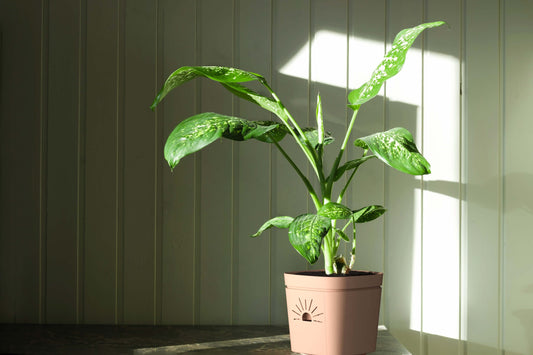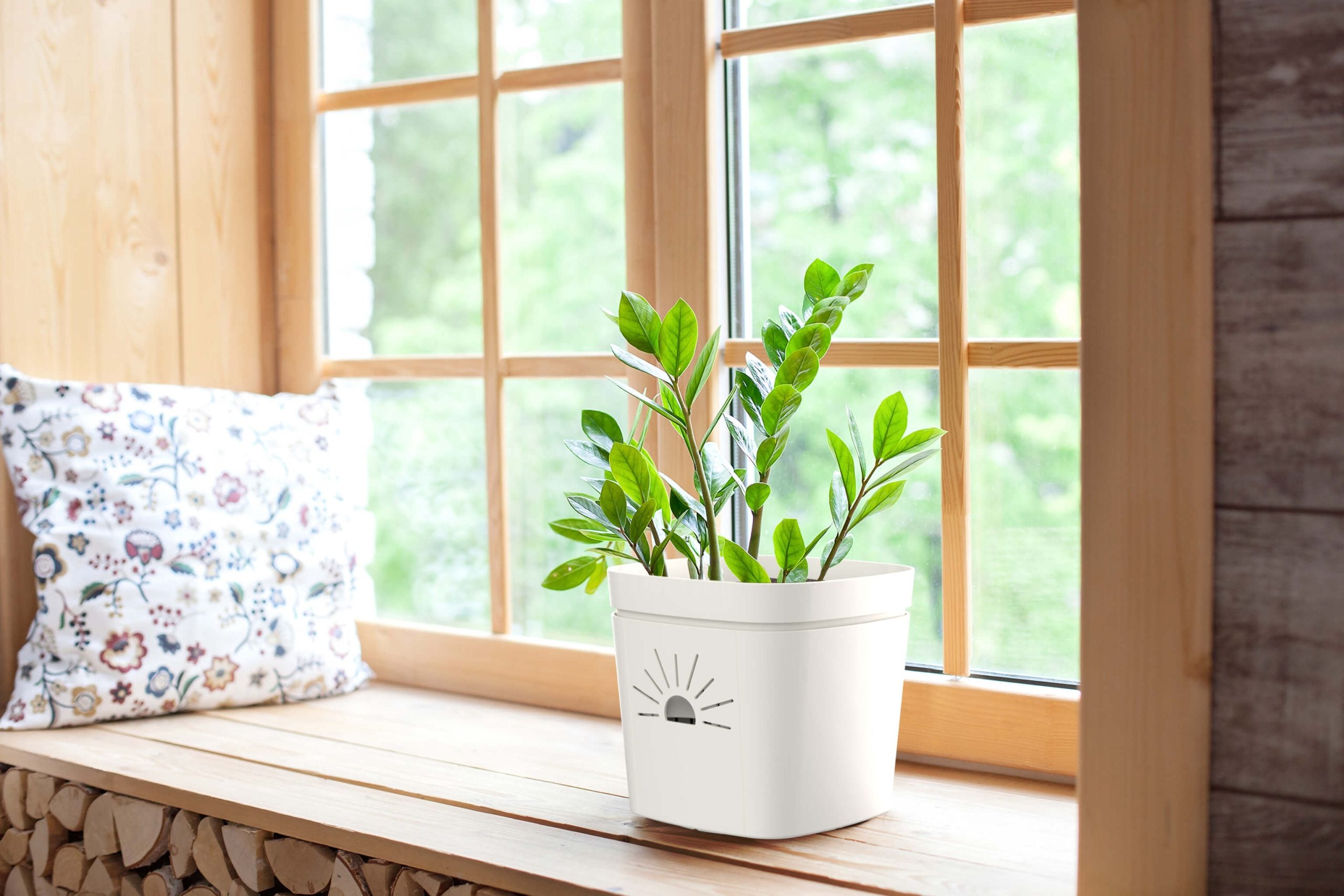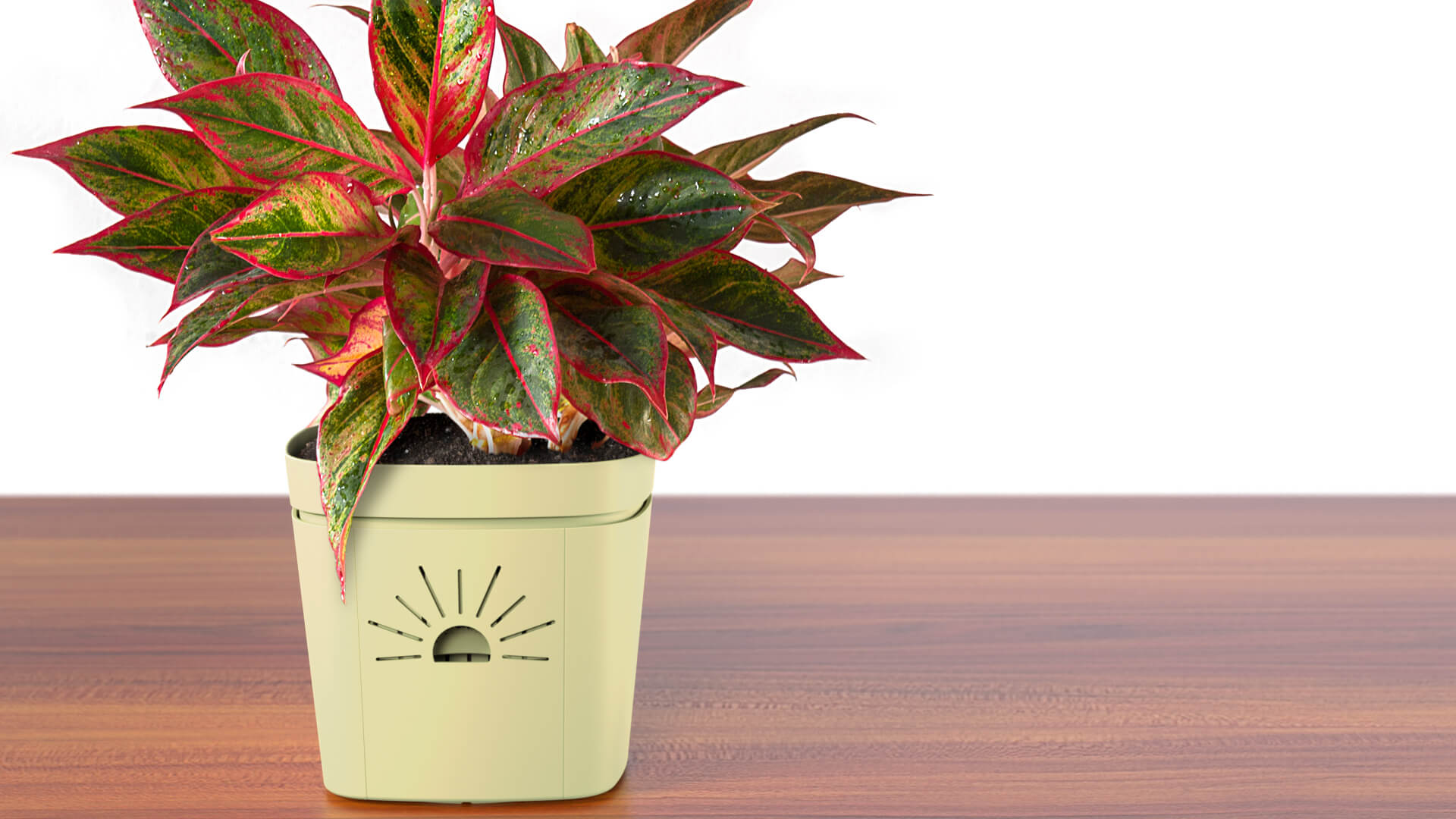Origins
Dieffenbachia, often referred to as dumb cane or leopard lily, is a genus of ornamental plants from the Araceae family that is native to Mexico, the West Indies, and parts of South America, including Argentina. It has become a popular houseplant due to its tolerance of shade and its attractive leaves with white spots and flecks. The English name dumb cane comes from the poisonous effect of raphides which can cause temporary loss of speech. This genus was named by Heinrich Wilhelm Schott after his head gardener, Joseph Dieffenbach. This genus contains 50 different species.
Light
Requirements
Dieffenbachia requires medium to bright indirect light. They do not like direct sun and are happiest two feet away from a window.
Genus Summary
| GENUS | Dieffenbachia |
| COMMON NAMES | Dumb Cane, Leopard Lily. |
| LIGHT | Low to medium indirect light |
| WATER SCHEDULE | Naked Root planter = 14 days. |
| WATER REQUIREMENTS | Other planters = drench and then dry the top two inches of soil. |
| HUMIDITY | Average/Medium |
| TEMPERATURE | 60-80°F. Never below 50°F |
| FEEDING | 1x month |
| TOXICITY | Toxic to both animals and humans. Do not ingest or touch with bare hands. |
| PESTS | Aphids, spider mites, mealy bugs. |
| DISEASES | Erwinia Blight, Xanthomonas leaf spot, Fusarium stem or root rot, Anthracnose Leaf Spot, Myrothecium leaf spot, and Phytophthora stem and root rot. |
| POT | Maximum root zone oxygen to discourage above diseases |
| SOIL | Standard potting soil that is amended with perlite for drainage |
| FERTILIZER | Heavy feeders. Fertilize every two weeks |
| PROPAGATION | Via stem cuttings, air layering, or suckers |
| PRUNING | Only to remove dead plant tissue or control growth |
| SIZE | 12 inches to 5 feet. |
Water Requirements
If using a Naked Root planter, a 14-day watering schedule is the best thing for a dumb cane. They have sensitive roots that are especially prone to fungal disease, so maximum aeration is wise.
If not using a Naked Root planter, dumb canes like to be thoroughly drenched and then allowed to dry out between waterings. They require excellent drainage and cannot handle extended periods with wet feet, as this leads to quick root rot.
Humidity
Dieffenbachia does fine with average home humidity levels between 40-60 percent. If you live in a very arid climate and have extremely low humidity grow your dumb can near an indoor humidifier.
Temperature
Dumb canes are tropical plants and prefer nice toasty temperatures between 60-80°F. Don’t let the temperature get to 50° or below, or the leaves will suffer permanent damage. If left in cold temperatures for extended periods of time, the plant will surely die.
Toxicity
Dieffenbachia, also known as dumbcane, is hazardous for humans to consume. It can cause burning and swelling in the mouth and throat, and in extreme cases, it can even lead to suffocation. Furthermore, the ASPCA has ruled that this plant is toxic for pets, as its leaves contain a type of crystal that may irritate their mouths and can prevent them from swallowing.
Pests and Diseases
Dieffenbachia can be plagued with any of the common houseplant pests. Aphids, spider mites, and mealybugs are the most bothersome. A cotton ball soaked in rubbing alcohol will get rid of these if you catch it early. A strong shower with a forceful jet of water is also helpful to knock them off. Do this every ten days until the problem is under control.
There are six diseases to watch out for on dumb cane plants.
Bacterial – Erwinia Blight, Xanthomonas leaf spot.
Fungal – Fusarium stem or root rot, Anthracnose Leaf Spot, Myrothecium leaf spot, and Phytophthora stem and root rot.
All of these diseases are a symptom of overwatering or using unsterilized equipment or both. Maximum root aeration and thoroughly clean gardening tools (and hands) go a long way toward prevention.
Pot
Choose a pot that allows for maximum drainage and aeration around the root zone to discourage fungal and bacterial infections, which tend to be a plague that commonly kills indoor dumb canes.
Soil
A standard potting soil that is lightened with perlite or sand to add room for oxygen works well. If you want to make your own mix, use equal parts, perlite (or coarse sand), sterilized soil, and peat moss. Throw in one punch of lime, and you have the perfect Dieffenbachia potting mix.
Fertilizer
Dieffenbachia is a hungry plant and likes to be fed every two weeks during the growing season. It does have sensitive roots, so half-strength liquid fertilizer is best. Do not fertilize at all during the winter.
Propagation
You can propagate your dieffenbachia plant at any time of the year in three ways: air layering, taking suckers, and through stem cuttings.
Air layering – To air layer, cut the stem of the plant halfway down, about one foot down from the top. Place a thin object like a toothpick in the stem to hold a soil mixture in place. Wrap wet moss around the cut and secure it with plastic and rubber bands or strings. When roots start growing, cut off the new plant below the roots and place it in a separate container.
Stem cuttings – Stem cuttings can also be used as long as there is a section with new leaves and stems on it. Bury half of the stem horizontally in your soil mix, and make sure the eye of the plant is facing upwards. Moisture and humidity will help with the rooting process, which takes about two to four weeks.
Suckers – If you are lucky enough to have a dumbcane that produces an offshoot, you can simply separate the baby plant from the parent and repot it.
Be sure to use a sterilized cutting tool when propagating, as dieffenbachia is very sensitive to bacterial and fungal infections.
Pruning
It is not mandatory to trim your Dieffenbachia plant, but you may wish to do so if you want it to stay in check. Be sure to wear protective gardening gloves when cutting the stems, as the sap has oxalate crystals that can cause skin irritation if you have any cuts. Utilize a sterilized pair of pruners or scissors to cut through the stems at a 45° angle.
10 Striking Varieties and Cultivars
- Dieffenbachia ‘Camille’ – This cultivar has wide white leaves that have lime and dark green edges. The foliage is oval and wide, with each leaf growing up to 16 inches long. This cultivar is one of the most common to find in garden centers and nurseries. Indoors it can reach 3-5 feet tall.
- Dieffenbachia ‘Camouflage’ – With leaves that are over 12 inches long, this cultivar puts on a great show for an indoor plant. Each leaf is a mixture of cream and lime green, covered in dark green spots and an even darker green trim along the leaf edge.
- Dieffenbachia ‘Seguine’ – This dumb cane has foot-long leaves that are bright lime green and edged and striped in darker green. The zebra-like striping is gorgeous!
- Dieffenbachia ‘Carina’ – This is one of the smaller dumbcanes, only reaching 20 inches tall. It has tri-colored leaves that go from cream, then lime, to bright green from the center outwards. Each leaf is 6-8 inches long and comes to a fine point.
- Dieffenbachia ‘Compacta’ – This is a tabletop dumbcane, at only 12 inches tall. The leaves are a brilliant white, edged in dark green, with blotches and spots of green marking each leaf in a leopard-like pattern.
- Dieffenbachia ‘Delilah’ – This Dieffenbachia has very long, pointy leaves that look like paddles. The center of the leaf is a muted shade of green. The edge of the leaf has a one-inch stripe of dark green. Each leaf is covered in cream and lime green speckles and comes to a sharp, delicate point.
- Dieffenbachia ‘Honeydew’ – This cultivar has leaves that are very wide at the base, nearly 8 inches across, and then narrower at the end. Almost the entire leaf is lime green except for a finely trimmed edge in dark green. The striking foliage can also grow the opposite way, with dark green leaves edged in light lime. Exotic!
- Dieffenbachia ‘Mary’ – Mary is a very fast-growing cultivar. It will quickly reach 24 inches tall. The light green leaves are splashed with dark green and cream spots and splotches. Plants grown in brighter light have nearly white leaves and splotches in green.
- Dieffenbachia ‘Star Bright’ – Here, we have another 12-inch tabletop variety. This dumbcane features bright green gold, speckled with green and white. The leaves grow in varying sizes, giving an asymmetrical appearance to the plant. Come leaves will stay 4 inches long, and some will grow to over 1 foot tall.
- Dieffenbachia ‘Tropic Marianne’ – How about a dumbcane with nearly all white leaves? This one looks very much like a hosta plant, with cream-colored leaves that can stretch 12 inches long and wide! This cultivar is more shade-tolerant than some other Dieffenbachia plants and, when happy, will produce a long flower spathe, similar to a peace lily.
Summary of Dieffenbachia Plant Care
Dieffenbachia plants are easy to care for, requiring only basic knowledge of light, soil, temperature, and water requirements. When it comes to light, they prefer medium indirect sunlight or a few hours of direct morning sunlight. These plants thrive in moist but well-drained soil that is rich in organic matter. They should be kept away from extreme temperatures and require regular watering (14 days in a Naked Root planter).
To keep your Dieffenbachia healthy, fertilize regularly during the spring and summer months with a balanced fertilizer diluted at half strength every other week. Prune stems as needed to maintain desired growth habits and remove any dead leaves or flowers immediately when noticed. Finally, do not forget to check for pests such as mealybugs or scale insects since these can be damaging if left untreated!

 Verified Buyer
Verified Buyer









